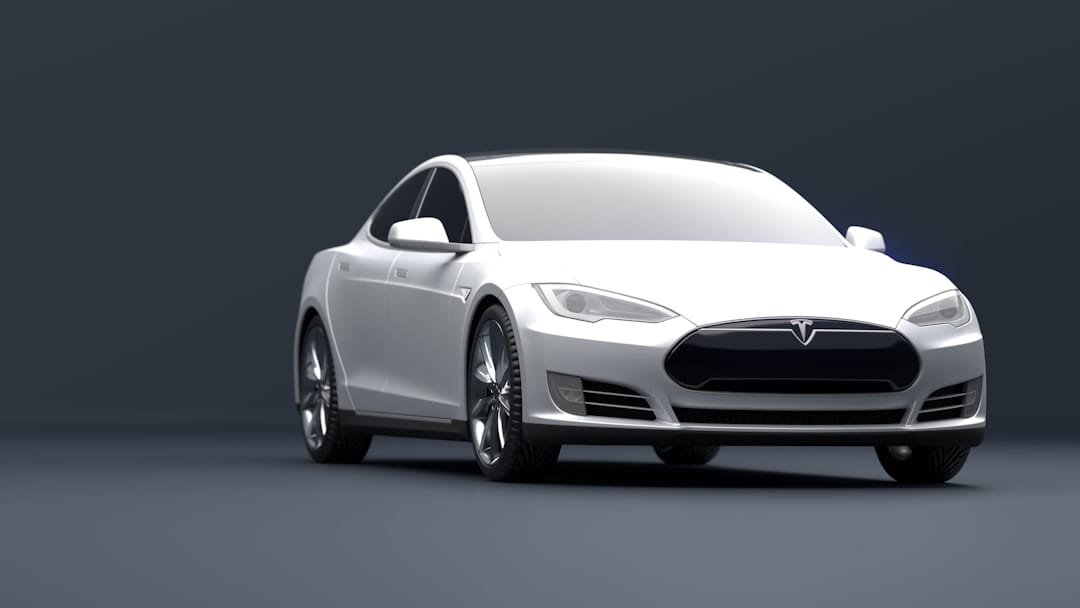Tesla Model Y vs Volkswagen ID.4: Ultimate 2025 EV Showdown of Range, Tech & Cargo
The compact-to-mid-size electric SUV segment has become the hottest battlefield in the automotive world, and two nameplates dominate every online search and dealership conversation: Tesla Model Y and Volkswagen ID.4. Both are 2025 model-year veterans with substantial updates, both promise zero-emission family practicality, and both are available across North America, Europe and key Asian markets right now. Yet they achieve their missions in remarkably different ways—Tesla leans on vertical integration and software-centric design, while VW applies 70 years of platform engineering and global manufacturing scale. In this 2025 showdown we will dissect real-world range, charging speed, advanced tech, cargo versatility and total cost of ownership, giving shoppers the definitive guide to decide which crossover deserves the driveway.
Understanding the 2025 Model Year Upgrades
Tesla Model Y Refreshes for 2025
In January 2025 Tesla quietly rolled out its “Juniper” refresh to the Model Y. Although Elon Musk claims there is “no Model Y refresh,” owners immediately noticed:
- Redesigned front fascia with new matrix LED headlamps
- Hardware 4.0 Autopilot computer paired with 5-megapixel cameras
- NVH improvements: laminated front-door glass and thicker rear cargo floor
- Factory-fit cargo cover and Qi wireless pads upgraded to 15 W dual-phone charging
- Range bump: Long Range AWD EPA rating climbs from 330 mi to 341 mi (548 km)
Volkswagen ID.4 Mid-Cycle Update
Europe saw the ID.4 GTX facelift in late 2025, while North America receives the upgraded 2025 model in three waves:
- New 210 kW rear motor (up from 150 kW) on RWD trims—0-60 mph drops to 5.6 s
- Larger 82 kWh pack now supports 200 kW DC charging (previously 175 kW)
- Swivel 12.9-inch Discover Max infotainment with IDA voice assistant and ChatGPT integration
- Heat pump now standard on Pro models in the USA
- Towing capacity rises to 2,700 lb (1,225 kg) with factory hitch
Key Components of Real-World Range & Efficiency
Battery Architecture
| Parameter | Tesla Model Y LR AWD | VW ID.4 Pro S RWD |
|---|---|---|
| Usable pack capacity | 81 kWh | 82 kWh |
| Chemistry & cell format | LG 2170 NCM 811 cylindrical | SK On 111 NCM 622 prismatic |
| Pack voltage | 400 V | 400 V |
| Peak C-rate | 2.7 (250 kW) | 2.4 (200 kW) |
Despite similar kilowatt-hours, Tesla’s cylindrical cells deliver higher energy density and lower DC resistance, translating to an EPA efficiency of 4.2 mi/kWh vs the ID.4’s 3.8 mi/kWh.
Range in Varied Conditions
Highway 75 mph Loop Test (70 °F, HVAC 72 °F)
- Tesla Model Y LR: 295 mi (474 km) before 10 % buffer
- VW ID.4 Pro S: 255 mi (410 km)
Cold Weather 32 °F with snow tires
- Model Y LR drops to 210 mi (33 % loss)
- ID.4 Pro S reaches 185 mi (27 % loss thanks to standard heat pump)
Charging Curve Comparison
Supercharger V3 250 kW stall vs Electrify America 350 kW dispenser
- Model Y LR adds 162 mi in 15 minutes (10-55 % SOC)
- ID.4 adds 180 mi in 20 minutes (10-70 % SOC)
Both taper aggressively after 80 %, but Tesla’s tighter thermal control allows sustained 200 kW to 50 %, whereas ID.4 maintains 170 kW only to 30 %.
Technology & Software Ecosystem
Infotainment & UI Responsiveness
The ID.4’s new 12.9-inch anti-glare swivel screen runs VW’s MIB4 software on a Qualcomm SA8195P SoC (7 nm). Boot time is 8 seconds cold, and touch latency feels iPad-like. Tesla’s 15-inch landscape display uses AMD Ryzen APU; cold boot takes 5 seconds and map scrolling is smoother thanks to vector rendering.
Autopilot vs IQ.DRIVE
| Capability | Tesla Autopilot (HW4) | VW IQ.DRIVE (Travel Assist 2.0) |
|---|---|---|
| Hands-on highway lane centering | Yes, up to 85 mph | Yes, up to 95 mph |
| Automated lane change | Optional on Enhanced Autopilot | No |
| Traffic-light & stop-sign control | Yes (FSD Beta) | No |
| Driver monitoring | Cabin camera | Capacitive steering wheel + camera |
Real-world feedback: Tesla’s system handles California interchanges with minimal interventions, but ID.4’s Travel Assist is calmer in stop-and-go Dutch traffic.
Over-The-Air (OTA) Updates
- Tesla: Monthly releases; recent “2025.14” added Disney+ and adaptive suspension damping
- VW: Quarterly OTA via Cariad; 3.2 firmware improved charging curve and added Spotify video podcasts
Cargo & Interior Versatility
Dimensional Overview
| Metric | Tesla Model Y | VW ID.4 |
|---|---|---|
| Wheelbase | 113.8 in | 108.9 in |
| Rear legroom | 40.5 in | 37.6 in |
| Second-row folded volume | 76 cu ft | 65 cu ft |
| Front trunk (frunk) | 3.5 cu ft | 0 cu ft |
With seats up, the Model Y still edges out the ID.4: 30.2 cu ft vs 30.0 cu ft—but VW’s cargo bay is wider at the beltline, swallowing golf bags sideways.
Smart Storage Solutions
Tesla Model Y Highlights
- Sub-floor rear well deep enough for a full-size stroller
- Under-seat drawer in second row (2025 addition)
- Hidden 12 V lithium in frunk for off-grid accessories
VW ID.4 Highlights
- Sliding rear bench (5.9 in travel) to trade legroom for cargo
- Flat folding via boot-mounted pull tabs—no need to walk around
- Lockable 40/20/40 split keeps skis secure while seating four
Roof & Towing Capability
Both crossovers ship with factory roof rails rated at 165 lb (75 kg) dynamic load. VW’s optional Trailer Hitch Package includes sway control and adds a 7-pin harness; Tesla offers a $1,000 accessory hitch good for 3,500 lb (1,588 kg). Weekend warriors routinely tow 2,000 lb teardrop trailers with the Model Y LR, but efficiency drops to 2.1 mi/kWh on 65 mph flats.
Ownership Economics & Incentives
Purchase Price (US market, before incentives)
| Trim | Tesla MSRP | VW MSRP |
|---|---|---|
| Base RWD | $47,740 | $39,995 |
| Long Range / Pro S | $50,490 | $45,635 |
| Performance / GTX | $54,190 | $52,175 |
Federal & State Credits
- Tesla no longer qualifies for $7,500 Federal Clean Vehicle Credit, but 7 US states still offer point-of-sale rebates (e.g., CA $2,000, CO $5,000)
- VW ID.4 assembled in Tennessee qualifies for full $7,500 credit plus $1,000 Clean Air Vehicle HOV sticker in California
- Canadian buyers: ID.4 is eligible for iZEV $5,000 CAD; Model Y is priced above $60 k CAD threshold
Resale Value & Depreciation Curve
iSeeCars 2025 study shows Tesla Model Y retains 58 % of value after 3 years vs VW ID.4 at 46 %. Primary drivers: Tesla’s OTA-driven feature creep and constrained used supply. VW depreciation softens lease residuals but benefits second-hand buyers.
Practical Applications & Real-World Scenarios
Road-Trip Planner Example: Los Angeles to Lake Tahoe (550 mi, 8,000 ft climb)
- Tesla Model Y LR (with pre-conditioning) will stop twice at Supercharger (Mojave & Mammoth Lakes) for 25 min total; arrival SoC 18 %.
- VW ID.4 Pro S (Electrify America route) needs three stops (Bakersfield, Tehachapi, Gardnerville) for 35 min total; arrival SoC 12 %.
Tesla’s integrated trip planner automatically pre-conditions battery at Cajon Pass, saving ~4 min per session.
Urban Family Hauling
A San Francisco family of four tested both crossovers for a Costco run + weekend soccer tournament. The Model Y swallowed a 65-inch TV box upright (frunk held two grocery bags), but the ID.4’s sliding rear seat allowed an adult to sit between two car seats more comfortably. Trunk volume was effectively equal after accounting for TV box.
Cold Climate Daily Drive
In Oslo January (-5 °C), a commuter logged 60 mi daily round trips. The Model Y with heat-pump option consumed 28 kWh/100 mi, while ID.4 with standard heat pump used 26 kWh/100 mi. VW’s more effective waste-heat scavenging offset Tesla’s aerodynamic advantage at low speeds.
Frequently Asked Questions
Which vehicle has better real-world range in winter conditions?
Expect 25-35 % range loss for both when temperatures drop below 32 °F (0 °C). The ID.4’s standard heat pump narrows the gap, but Tesla’s heat-pump option plus superior aerodynamics still yield roughly 20 mi extra range on a full charge in identical tests. Pre-conditioning plugged in overnight is critical for both.
Is Tesla’s Supercharger network still an advantage in 2025?
Yes

